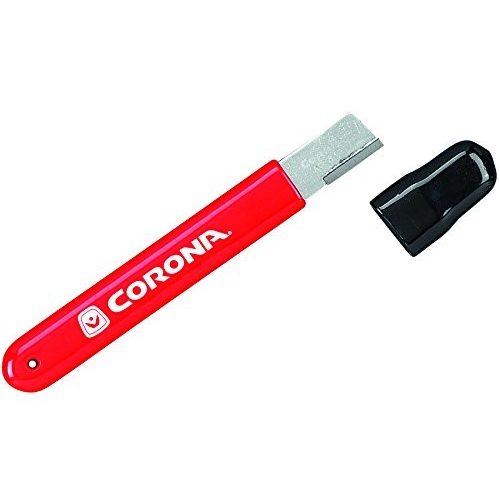
by Stan Logan | Mar 19, 2020 | Garden tools

Sharpening Tool
I am really excited about a new tool that I just discovered. I was sharpening tools for the volunteers pruning the roses at the Sacramento Historical Cemetery, and one of the workers showed me a sharpening tool that I had never used. I had avoided it because it seemed like just a gadget too simple to be effective. But I tried it out on the spot, and it really works! This tool consists of a handle with a slim rectangle of carbide at the end. Even though the carbide has 90 degree edges, those edges are so sharp that they are able to shave off metal from the cutting edge of a pruner or lopper. Using this tool takes just a little practice, and I could show you the technique in few seconds if you end up buying one. So why would you use this tool instead of the metal file that I’ve touted before? Using a file is tricky because you have to stabilize the garden tool and then establish the proper angle with the file. Then too, sometimes there is very little space to fit a file near the hinge point of the blades. This new tool avoids these complications. It is such a small tool that it can easily be carried in your pocket if you want to sharpen your pruner on the job. So I think this tool should be on your must buy list if you like to keep your pruners and lopper sharp.
The Corona AC 8300 Sharpening Tool can be purchased on Amazon for $10.
Stan, still The Tool Man
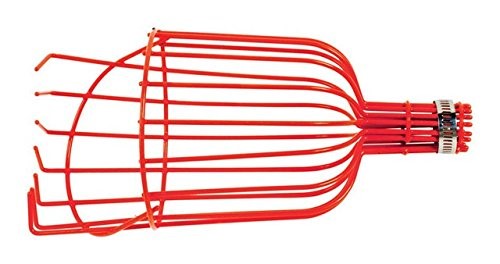
by Stan Logan | Mar 19, 2020 | Garden tools

Fruit Picker Head
This tool article comes with a story:
Every time LaVille and I are at home for lunch we have a huge salad. It is basically a salad made with chicken and romaine lettuce. The chicken is strips of meat cut off a Costco rotisserie chicken. I call it “carcass chicken”. The final carcass, by the way, is never wasted. After 2 or 3 carcasses accumulate in the freezer, they are boiled in a pot that is first used to caramelize an onion and diced carrots and celery. While boiling, crushed pepper corns and celery are added. After 3 or 4 hours of slow boiling the mixture is poured into a colander and the liquid collected. After the liquid cools and is then refrigerated, the solidified fat is scooped off the surface. This chicken stock forms the basis for making various kinds of soups that are the mainstay of our evening meals.
But I digress—back to the salad: To the mixture of lettuce and chicken meat, we add a great number of things: chopped walnuts, raisins, Craisins , grapes which have been cut in half so they won’t roll off the fork, tomato, cucumber, green onion, red or yellow bell pepper, sliced boiled egg, apple, avocado, and mushrooms. Now, admittedly, not every one of these items is added every time, but what really adds a punch is pieces of fresh orange. Here’s the problem: All of the oranges on our orange tree have been picked . . . but there are still oranges on our neighbor’s tree and it is right next to the fence that divides our yards. I have found that the fruit picker that I bought at a garage sale years ago works really well to pick off one orange each day to add that extra treat to our salads.
Now if your neighbor’s trees are away from the fence, you should consider ordering a pole that is extendable. If you google “fruit picker head” on Amazon, you will find the basket alone costs only $8. It should attach to an old broom or mop stick. The extendable pole can be found at the same site for about $26.
If your neighbor’s trees are really far from the fence, I suggest you invest in a good 6 foot ladder and dark clothing for night time harvesting. A black hoody would be appropriate. I always prefer fiberglass ladders. They are more stable than aluminum and will last you a lifetime, which may be shortened if you slip and get impaled on the fence. That reminds me of our visit to Dracula’s Castle in Transylvania when we were learned about Vlad The Impaler—not a nice guy. But then that’s a whole different story that you don’t want to think about while eating your healthy salad.
Stan, The Tool Man
Addendum: You know, it’s rather embarrassing when you are trying to remove a stubbornly held orange from a neighbor’s tree, and the picker head comes off and hangs there like some sort of a weird out of season Xmas ornament. Make sure you tighten the hose clamp securely to your pole . . . or you’ll just be standing there with a stick in your hand . . . like I said . . . rather embarrassing.
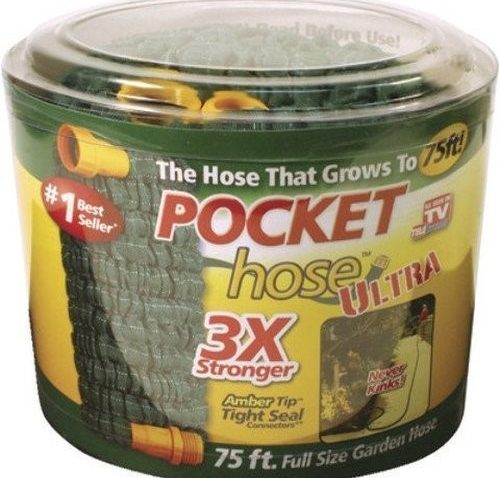
by Stan Logan | Mar 19, 2020 | Garden tools, Irrigation
What can you say about hoses? That’s what I asked myself when it was suggested I do an article about hoses. I’ve been pondering this question for several months now. I have some thoughts that are possibly worth sharing . . . or not.
The most basic rule as with practically all things you buy: “You get what you pay for.” If you buy a cheap hose, you will likely have problems with kinking, the fittings will eventually leak, and the hose material will not bear up against the ravaging of the sun’s rays. Other than this obvious cost consideration, there are other decisions to make.
Most garden hoses have a 5/8 inch inside diameter. ½ inch hoses are lighter, have reduced volume flow, and are generally of low quality. How much length do you need? Most hoses are 50 feet long. I’ve noticed a long monster for sale at Costco.

Pocket hose
You must have noticed the “Pocket Hose” or the other numerous expandable hose brands that seems to be the latest hot item on the hose market. You can find it for sale in a container about the size of a lunch box. You have to use one of these to appreciate them. It weighs almost nothing, so if aging muscles have difficulty dragging a heavy hose around, this may be the hose for you. You don’t have to worry about knocking things down as you drag the hose because it doesn’t ever lie in stiff loops on the ground. When you release the pressure, the hose shrivels up to almost nothing and can be stored in a large flower pot. However, these hoses are notorious for developing leaks in a very short time. They have come out with supposedly improved models. I have to admit that I bought one of these Pocket Hoses at Target because it was on clearance for $14—I can’t resist a sale. The regular price is over $30. You see, I had found a Pocket Hose at a garage sale months ago, and LaVille really loves it. It developed a leak next to a fitting, but I was able to fix it. I think it will be only a matter of time before her hose is a goner, but now I have a back-up. I figured that $14 for a hose that my wife loves for one year is worth it. If you choose to also gamble, don’t leave the pressure on after use. Also, stepping on it can result is premature death . . of the hose, that is.
Then there is the stainless steel hose that has recently appeared. If you believe all the hype, this is the hose of the future . . or not. Since I knew nothing about these hoses, I looked at the comments for the different models you can buy on Amazon. I hope you have used consumer comments to help you select products when you buy online. These comments are often very revealing and often amusing. Among the comments about these hoses were many complaints about the low volume flow and frequent leaks—but these varied a great deal from brand to brand. It once again revealed the fact that you get what you pay for.
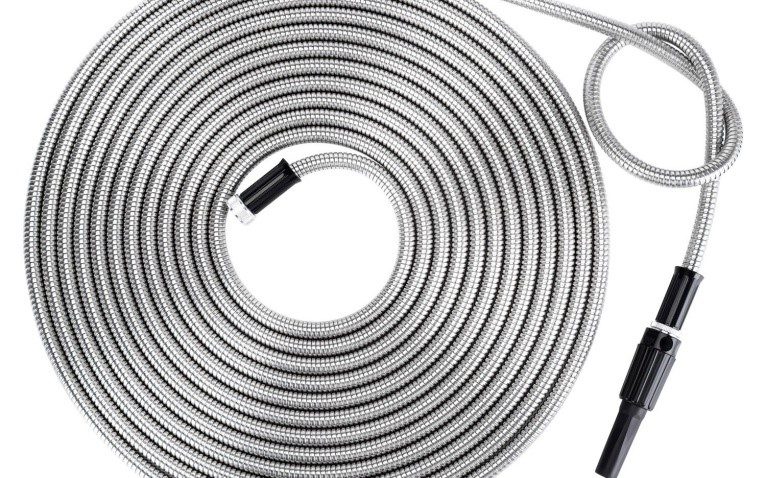
Steel Hose
How about coiled hoses? I hate coiled hoses. If they don’t result in premature death from tripping on them, they will cause a heart attack for all the stress they create when they get tangled or hung up on something. Volume flow is low. These stupid hoses do not last very long either. That being said, we have one of these . . I don’t know why . . except they do recoil into a relatively small space. Actually, my proof reader says she likes this hose and uses it more than any other hose. And here I was ready to pull out that Pocket Hose that I was saving for a leaky day.
Hope you’re a happy hoser,
Stan, The Tool Man
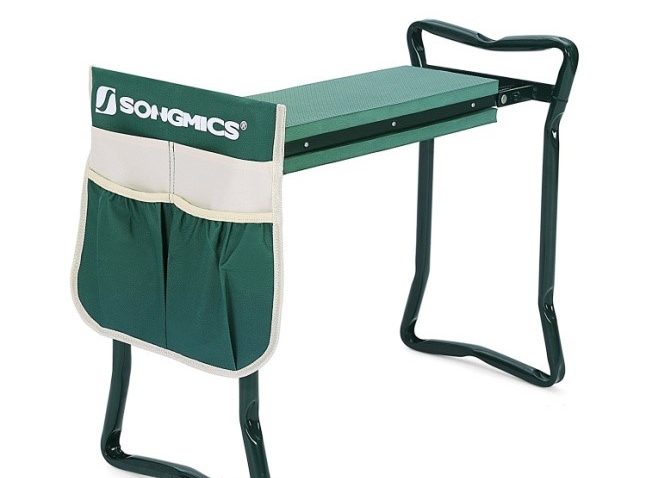
by Stan Logan | Mar 19, 2020 | Garden tools, Safe Gardening

Kneeling Bench
Not all of us are comfortable kneeling, but playing in the garden often requires it. My kneeling days are numbered, even though I’ve been protecting my knees with knee pads for years. In fact, I have a set for indoors and a set for outdoors. I wear knee pads so much that I just keep them on when I nap in the recliner between play sessions.
An alternative to wearing knee pads is using kneeling pads—one inch thick pads of soft material that you place between you and the ground. We must have 3 or 4 around here. I’ll grab one for LaVille when I catch her kneeling on a hard surface. These pads are fine to use, but when you move around a lot, like when I’m chasing weeds around the yard, it’s a nuisance to carry the pad with you.
Here, for you persistent kneelers, is a device that you may wish to purchase and use. It’s a seat bench that can b e turned up-side-down and then used as a kneeling pad. Look at the attached picture to see what I mean. You can work while bending over from the bench, or you can kneel when it’s flipped over. Perhaps the best feature is the fact that you have 2 supports on the sides that will help you get up—which is the hard part. Do you remember that the main reason for using a rigid plastic bucket when weeding was that you could use it to help you get up? An additional feature is that the legs can folded in for storage.
There is a variety of kneeler benches at Amazon for less that $40.
If your knees could talk, they would thank you. The side supports may just be the feature that will save you from taking a face plant into the garden—and nobody likes to grow face plants.
Keep on kneeling,
Stan, The Tool Man

by Stan Logan | Mar 19, 2020 | Garden tools

power washer
I really like to clean. One of my favorite chores is to do the laundry. Polishing silver is great fun. I used to collect antique wooden pulleys. I would clean them up and refinish them to make them look new. Of course, that reduced their value, but I didn’t care. I actually like to weed—it’s just another form of cleaning. I could go on and on, but I think you get the idea.
Today, my favorite cleaning tool is the power washer. I use it so frequently that it is always connected and ready to go in the back yard. Here are some of the things I have cleaned in the past with a power washer: used clay pots, a bird bath, water barrels, large tools I have bought at garage sales, sidewalks and pavers, windows, kids’ riding toys, cars, the barbeque, the organic, garbage, and recycling bins, and shovels and tarps after use. After the rainy season, I’ll go around and clean off all the dirt and debris that rain has splattered up on the house and planter boxes.
I hope you have thought of ways you could use a power washer. I strongly suggest that you get an electric model—not gas. Realize that you will have to be able to plug this device into an electrical outlet and attach a hose. When you move this device around your yard, you will be dragging also three lines: electric cord, hose, and tubing that leads to the spray wand. So some strength and patience is required.
Many different models are available on line and in big box stores. You shouldn’t need a power washer that puts out more than 1800 psi (pounds per square inch). My old one only puts out 1350 psi and it has been sufficient for almost everything.
So if you are a cleaning freak as I am, this is the tool for you.
Happy cleaning!
Stan, The Tool Man







